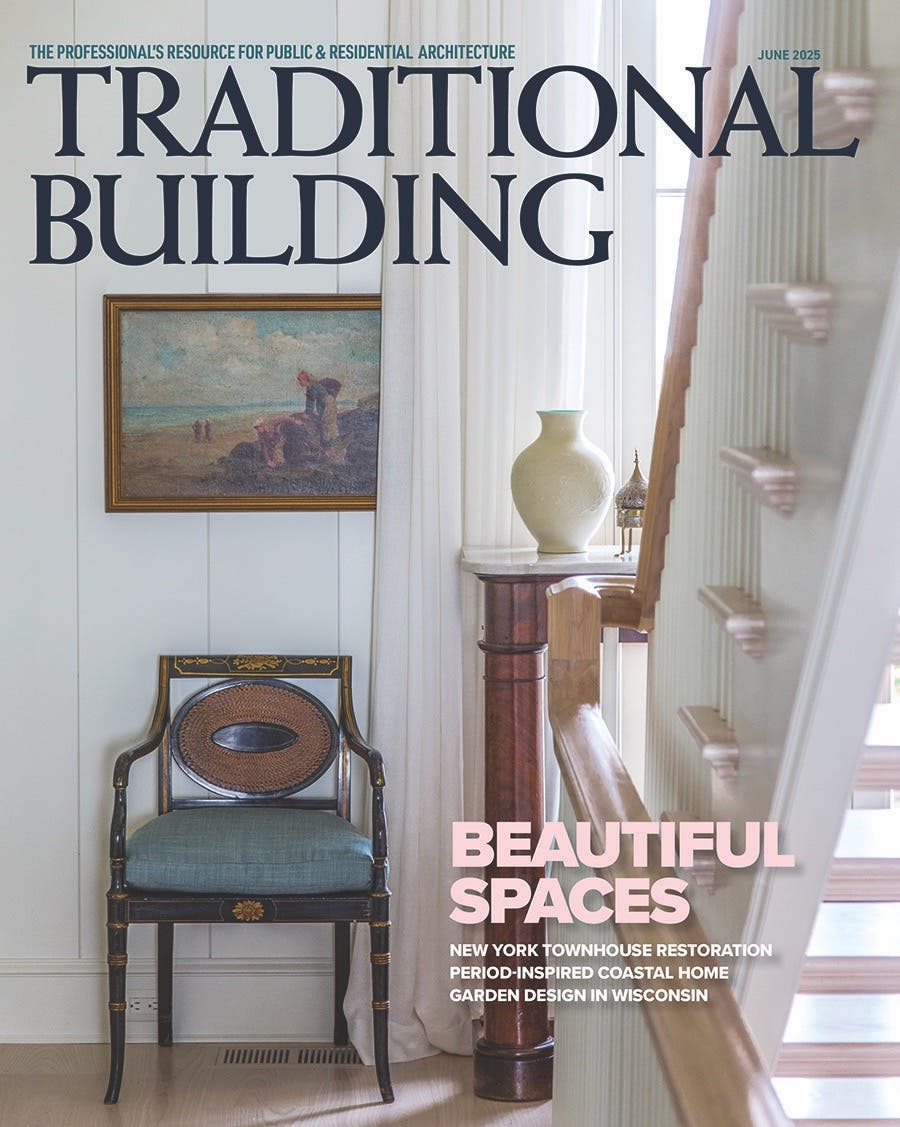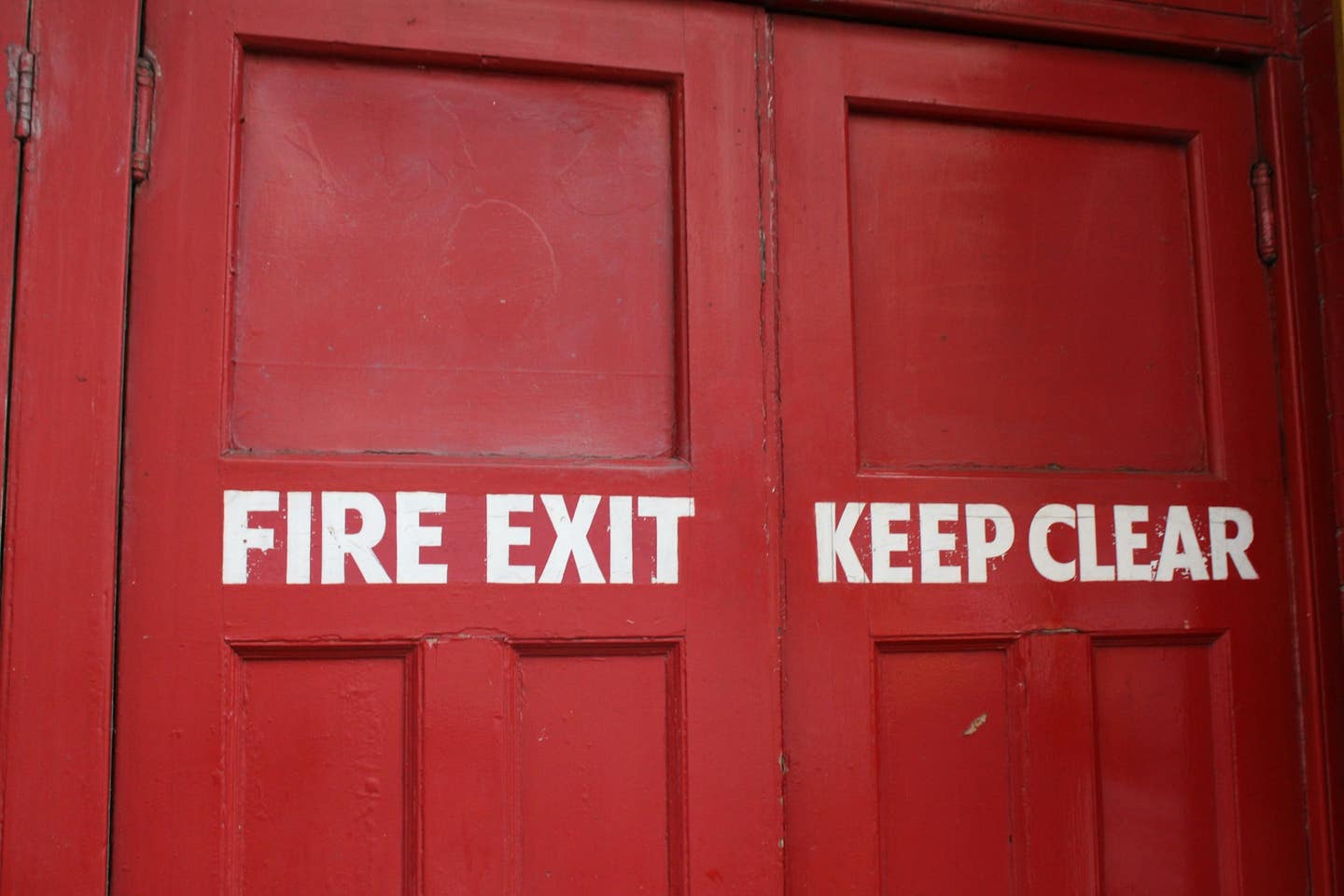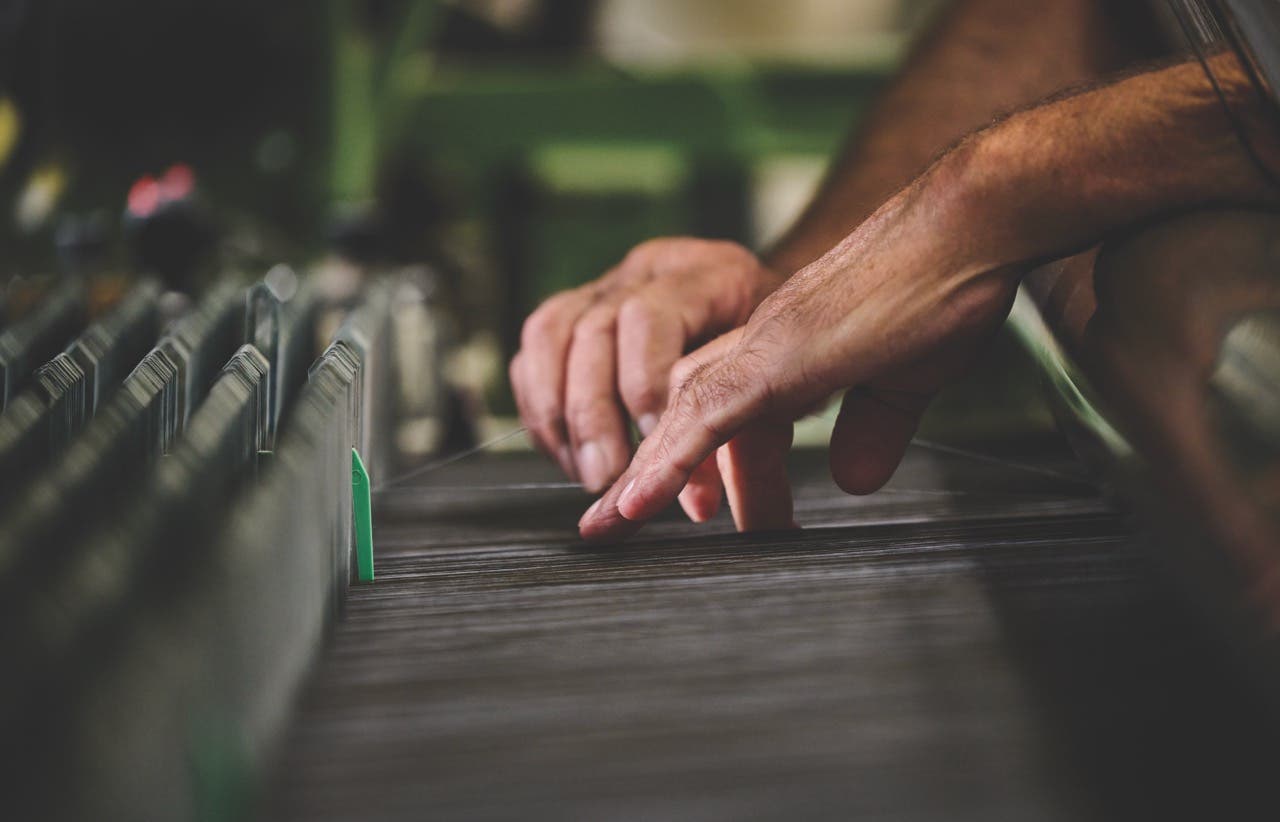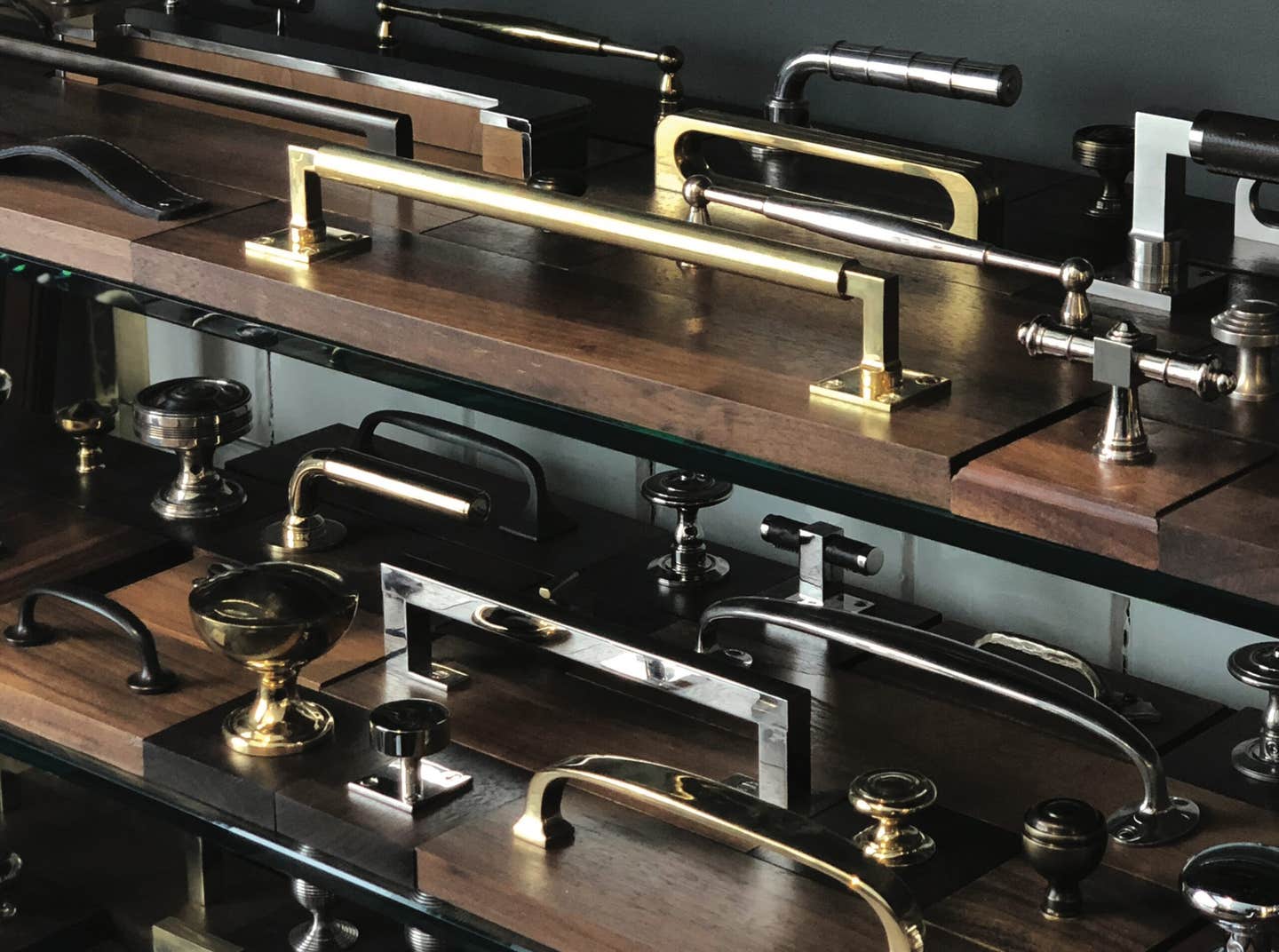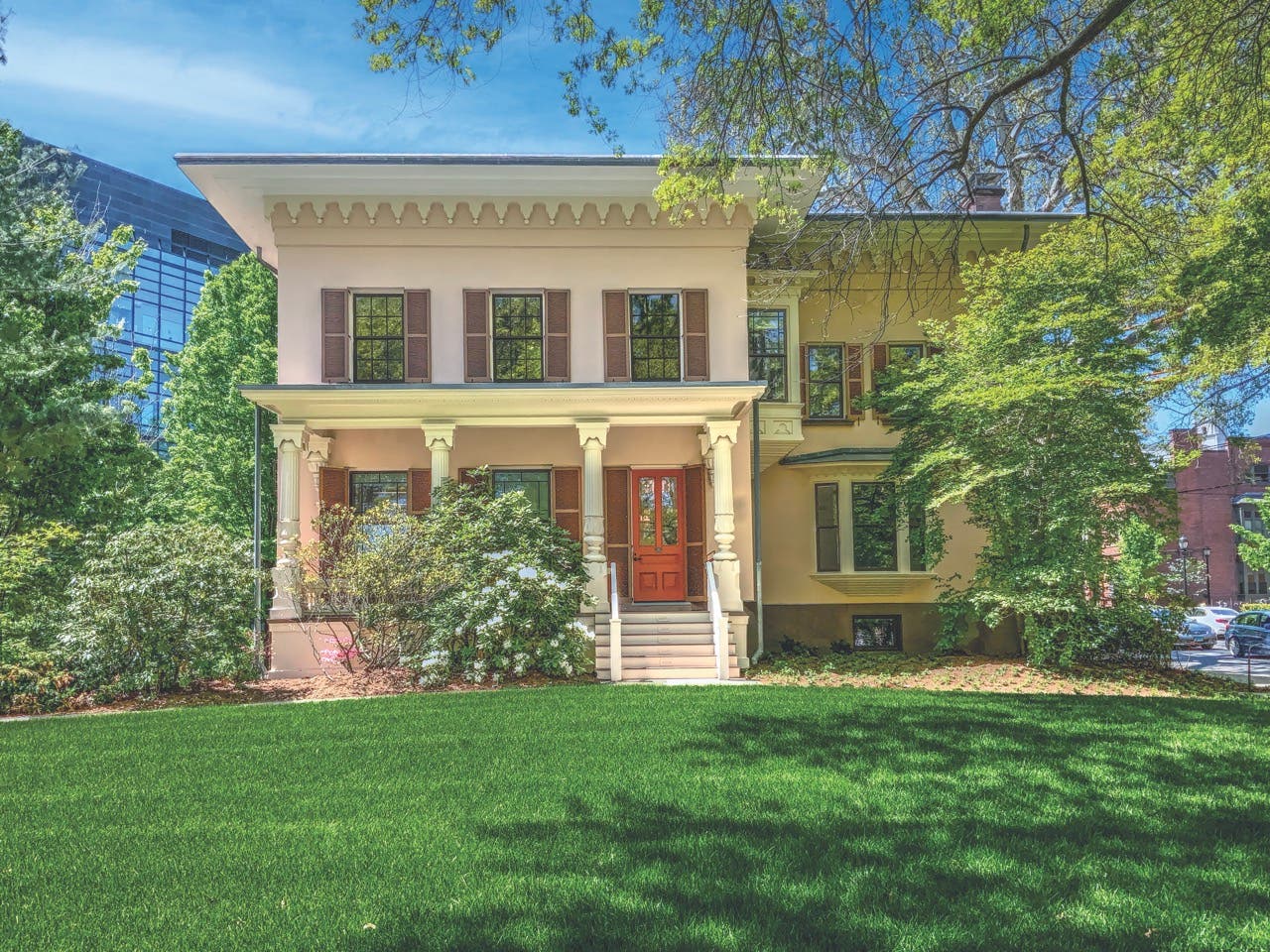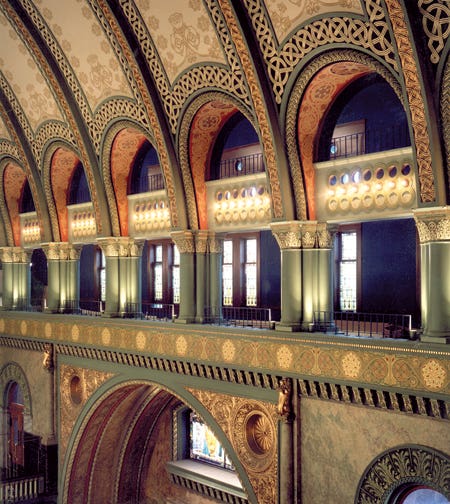
Product Reports
The ABCs of Decorative Ornament





The experts agree: Decorative ornament is a big plus in commercial buildings.
By Nancy A. Ruhling
Decorative painting, whether it's in the form of a faux-marbleized column or an uplifting ceiling mural, has long been recognized as a beautiful, cost-effective way to add prestige, caché and even monetary value to commercial properties. "The mural is the personification of the property," says Jeff Greene, president of EverGreene Architecural Arts, which has been reviving and reinventing the techniques of decorative painting since its founding in 1978. "It takes the fine art out of the galleries and puts it where people can see it."
If art sells real estate, and Greene is convinced that it does, the deal is sealed in the front lobby. "You create the ambience through decorative finishes as you enter the building's public space," he says. "This is where the drama is, whether it's an upscale, highly designed space or a restoration that re-creates what was there originally."
EverGreene, which has done projects for the Empire State Building, the Chrysler Building, Grand Central Terminal, the Plaza Hotel, the Smithsonian Institution, Bergdorf Goodman, Tiffany & Co. and numerous Broadway theaters as well as 32 of the nation's 50 state capitols, uses a combination of digital prints and hand painting in most projects. "We do designs with repeated images at full scale and transfer to digital so it looks like hand painting," he says. "Or we might start with a photo and blow it up digitally so we can paint on top of it."
Greene, whose company has offices in New York City, Chicago and San Luis Obispo, CA, is quick to note that this doesn't mean that technology is edging out old-world techniques. "We're always looking through the dustbin of history," he says. "There still are a lot of finishes like angel gilding and églomisé that have not been used."
While murals remain perennially popular, he says that clients are starting to ask for more bespoke finishes that include exotic metals, like palladium and white gold, and are becoming interested in sgraffito, natural finishes and Venetian plaster. "We're always inventing new finishes to stay ahead of the curve," he says. "In the future, decorative painting designs, as well as other designs, will increasingly be influenced by computer graphics." Regardless of the technique used, Greene says that "we're not just gilding the lily; we're strengthening the architecture."
John Canning, principal of Canning Studios, says that color and design, in tandem, can be used to great effect to set a certain mood, something that is particularly desirable in commercial spaces, where the longer people stay, the more they buy. His Cheshire, CT-based company, which has specialized in art restoration, decorative painting and plastering since the early 1970s, has proved this point over and again in venues as varied as the Empire State Building, Grand Central Station, The Plaza Hotel and Radio City Music Hall, where he recently applied 90,000 sq.ft. of gold and aluminum leaf and Dutch metal and 50,000 sq.ft. of transparent glaze.
"It's all about the psychology of decoration," he says.
Decorative painting, he says, can be used to great effect to define the game-changing chaos of a casino. "In casinos, the decoration is deliberately discordant. It has a lot of sharp edges and is designed to keep players on edge to keep them there. Decorative painting can play into this by bringing in a kaleidoscope of colors that crash into each other to create the right atmosphere."
Theaters set the stage for another property of decorative painting: The ability to lead the eye to precisely where the plot is being played out. "One of the biggest complaints in theaters is that modern designs play up the proscenium, which is meant merely to frame the stage," Canning says. "They distract people and compete with the production. This can be rectified with the right painting techniques."
He says that an increasing number of old-time theaters are rediscovering the value of decorative painting during redecorations. "Many of them have been painted over through the decades," he says. "They want the biggest bang for the buck. They often will create a new design that's a variation on the old one." The San Francisco Opera House is a case in point. For this Neoclassical building, the Canning team used techniques from the 1920s, including the application of Dutch metal, in the design.
State capitol buildings use decorative painting techniques, principally the exterior gliding of their domes, to imbue them with a visible gravitas, Canning says, adding that today, there's a "good honest attempt to restore them to their original grandeur."
"Paint is an art form," says Heidi Gruenke Emery, vice president of Conrad Schmitt Studios. "Wallpaper is beautiful, too, but paint has the artist's hand, and it can be used to create decorative gems." Founded in 1889, Conrad Schmitt Studios has been in the Gruenke family since 1953, and has had a hand in a variety of prestigious projects. In addition to restoring theaters designed by Rapp & Rapp, John Eberson, C. Howard Crane and Thomas Lamb and religious and secular buildings by Louis Sullivan and Frank Lloyd Wright, the company has worked on a number of government buildings, notably the Milwaukee City Hall and the U.S. Federal Building & Courthouse in Milwaukee. Its decorative painting work may also be seen at the Waldorf Astoria, St. Louis' Union Station and the Paramount Theatre in Cedar Rapids.
The family-run studio in New Berlin, WI, has some 60 people on its staff. It generally starts historic projects by doing a paint analysis. "We take core samples to get the colors and the types of paints originally used," Emery says. "We also make sure the envelope of the building is secure. You don't want the paint to fall off because of the moisture."
The company uses oil paint for murals and stencils because it stays moist longer, allowing the artists to make changes for a longer period of time. Sometimes, portions of projects are painted with acrylics. "Acrylics have come a long way," Emery says. "There is an ease of use, and they are environmentally friendly."
One key to a successful project is actively engaging the client.
"Sometimes we do a sketch, and this creates enthusiasm," she says. "Or we do a sample — a cross-section of the decoration. This allows decisions to be made about pattern and color and lets us price it accurately. It also helps with fund-raising because people can see what the completed project will look like."
"There's a growing appreciation for using decorative finishes," she says. "There's an extra upfront cost, but it will last a lot longer than a plain wall and be a lot more beautiful. It's a great investment." And the best part of going from blank to beautiful, she says, is "hearing people say, 'I remember it being like this.'"
Russ Elliott is as colorful as the murals and paintings he has created during the last half century. "You can take a square room and make it round with paint," he says. "You can take a small entranceway and make it look big. You can make bathrooms the most interesting rooms in the building. You can do anything you want with paint." And, during his long, storied career, the 81-year-old certainly has. In Trump Tower, he painted a koi pond and clouds in a bathroom; he hid black panthers in a jungle at the Copacabana in New York City; and he seated King Minos on a throne at the Minotaur Restaurant at the Wyndham Hotel in New York City.
"Minos was my biggest challenge," he says, "because I couldn't be me. I had to be Greek and 4,000 to 5,000 years old." He worked from a 2x3-in. photo from a newspaper article about King Minos' temple in Crete to create the artwork in a room the size of a basketball court. "I copied the mural in the temple," he says. "People came in and cried." To further the illusion, he fauxed five fountains to make them look ancient.
Back in the day, when he hung out with Hollywood stars Joan Crawford and Cliff Robertson and even the Duke and Duchess of Windsor, his paint brushes were always at the ready. "I have a photographic memory," he says, adding that he still does most of the painting himself. "I can paint anything I see or want. I walk into a room that has white walls. I stand there, then I sit and I see the mural finished. I take a Magic Marker and make cartoon outlines or a paintbrush and I paint what's in my head."
A typical Elliott project, which is hand-painted in acrylic then varnished, takes two weeks to six months to complete. "I work so rapidly — it's like the difference between handwriting and typing," he says, adding that "it's the color and scale that make hand-painted murals special." Elliott also paints on canvas then installs the finished artwork on the wall. "Canvas is inexpensive," he says. "It's easy to put up and you can take it with you when you leave."
San Francisco artist Lynne Rutter, who has made murals for restaurants, casinos and hotels, sees her work as art. "People think of decorative painting as being somehow less about expressing oneself and more about decoration, but this is not true of many of us in the field," she says.
The award-winning muralist and colorist is passionate about historic projects. "On the West Coast, there is a lot of creative reuse of our older buildings, so even if the project isn't a 'restoration' per se," she says, "the period detail of a building can be celebrated in its new incarnation, and decorative painting is an excellent way to achieve that sense of history."
Rutter, who is inspired by the works of masters like Vermeer, Fra Angelico and Max Beckmann, travels extensively, picking up ideas along the way. "I collect images of ornament, or moments of great old murals and beautiful surfaces," she says. "Recently, I submitted a design for a dome based on something I saw in a beautiful place I visited in Bulgaria."
Murals are an ideal medium for Rutter, who studied architecture and design at the University of California at Berkeley before she opened her boutique atelier in 1990. Typically, she paints the murals on canvas in her studio and installs them on site. "This process — marouflage — is an excellent technique for saving valuable time and allows for more detailed work to be done in advance," she says. "In some projects, like the 900-sq.ft. ornamental ceiling mural created for the Paris Hotel and Casino in Las Vegas, the stenciling was done on site and instead of working weeks on site, my team and I were only there for four days."
Rutter points out that decorative painting serves no one style, and that's what makes the work interesting to her. "I have been doing this since the mid-1980s and the popularity of decorative painting has gone up and down over the years, but mainly what I see is a change in the design of the work," she says. "The skills and techniques used are similar even as the definition of 'contemporary' changes from year to year."
On that note, Rutter says she's getting a lot more requests for gilding and metallic-like finishes to coordinate with graphic flat-looking designs.
San Francisco artist Lynne Rutter, who has made murals for restaurants, casinos and hotels, sees her work as art. "People think of decorative painting as being somehow less about expressing oneself and more about decoration, but this is not true of many of us in the field," she says.
The award-winning muralist and colorist is passionate about historic projects. "On the West Coast, there is a lot of creative reuse of our older buildings, so even if the project isn't a 'restoration' per se," she says, "the period detail of a building can be celebrated in its new incarnation, and decorative painting is an excellent way to achieve that sense of history."
Rutter, who is inspired by the works of masters like Vermeer, Fra Angelico and Max Beckmann, travels extensively, picking up ideas along the way. "I collect images of ornament, or moments of great old murals and beautiful surfaces," she says. "Recently, I submitted a design for a dome based on something I saw in a beautiful place I visited in Bulgaria."
Murals are an ideal medium for Rutter, who studied architecture and design at the University of California at Berkeley before she opened her boutique atelier in 1990. Typically, she paints the murals on canvas in her studio and installs them on site. "This process — marouflage — is an excellent technique for saving valuable time and allows for more detailed work to be done in advance," she says. "In some projects, like the 900-sq.ft. ornamental ceiling mural created for the Paris Hotel and Casino in Las Vegas, the stenciling was done on site and instead of working weeks on site, my team and I were only there for four days."
Rutter points out that decorative painting serves no one style, and that's what makes the work interesting to her. "I have been doing this since the mid-1980s and the popularity of decorative painting has gone up and down over the years, but mainly what I see is a change in the design of the work," she says. "The skills and techniques used are similar even as the definition of 'contemporary' changes from year to year."
On that note, Rutter says she's getting a lot more requests for gilding and metallic-like finishes to coordinate with graphic flat-looking designs.


